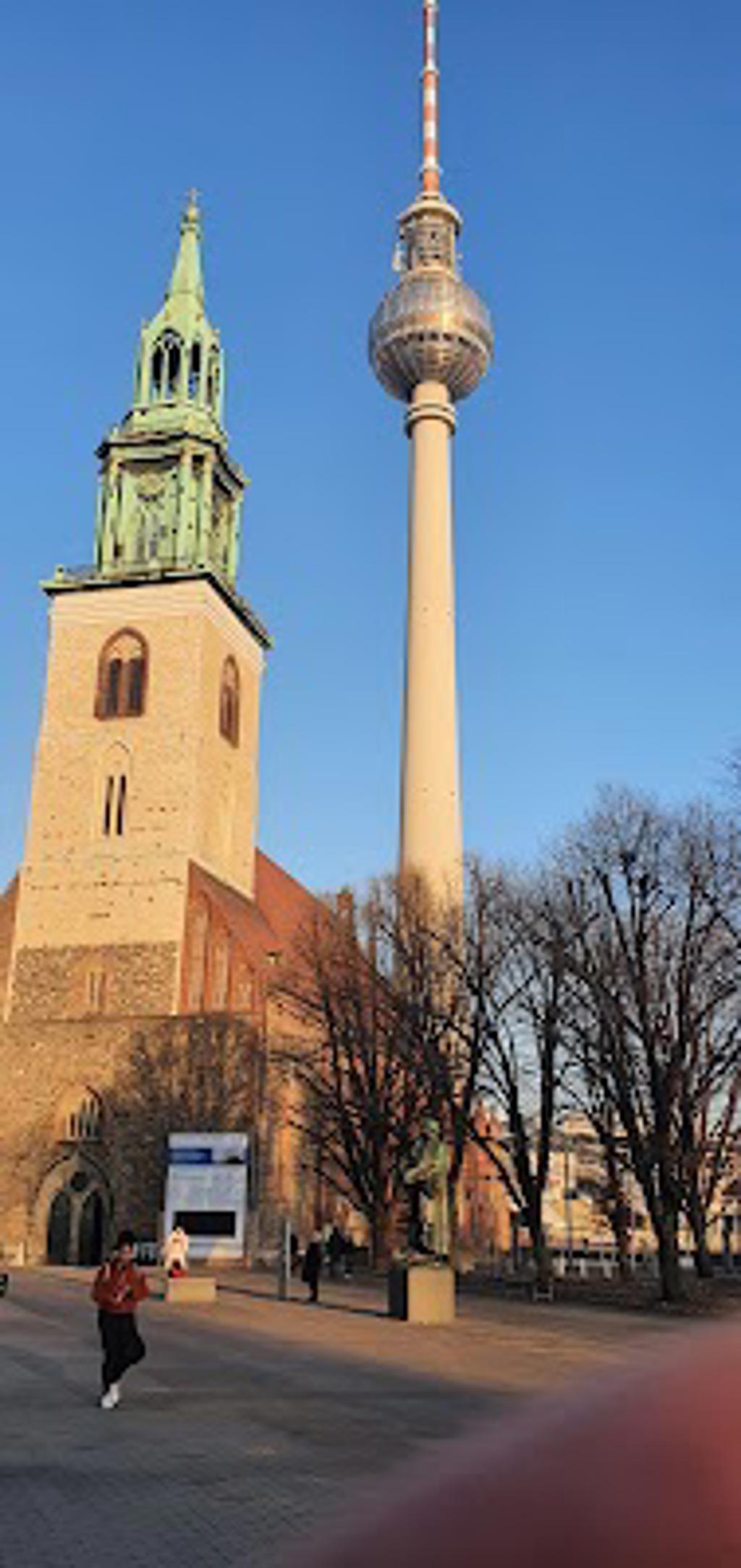About Lutherdenkmal
The Lutherdenkmal, or Luther Monument, is a significant historical and cultural landmark dedicated to Martin Luther, the seminal figure of the Protestant Reformation. Located on Karl-Liebknecht-Straße in the Spandauer Vorstadt district, this monument stands as a tribute to Luther's profound impact on religion, society, and culture.
Historical Background
Martin Luther was a German theologian and monk whose writings and actions in the early 16th century sparked the Protestant Reformation. His 95 Theses, nailed to the door of the Wittenberg Castle Church in 1517, criticized the Catholic Church's practices, particularly the sale of indulgences. This act set off a series of events that led to significant religious, political, and cultural changes across Europe. Luther's translation of the Bible into German made the scriptures accessible to the common people, further solidifying his influence.
Plan your perfect trip to Berlin with Travo! Download now and start exploring.
Monument Details
The Lutherdenkmal features a striking statue of Martin Luther, often depicted holding a Bible, symbolizing his role in making religious texts accessible to the masses. The statue is mounted on a pedestal, which includes inscriptions and reliefs that highlight key moments from Luther's life and the Reformation. The monument's design reflects the reverence and respect accorded to Luther as a pivotal figure in history.
Symbolic Significance
The Lutherdenkmal serves as a powerful symbol of religious reform and freedom of thought. It commemorates Luther's courage in challenging established religious authorities and his contributions to the development of Protestantism. The monument also stands as a reminder of the broader cultural and intellectual shifts that the Reformation initiated, influencing areas such as education, governance, and individual rights.
Artistic Aspects
The statue of Martin Luther is a work of art that captures his determined and contemplative nature. The sculptor's attention to detail is evident in the lifelike representation of Luther's features and attire. The pedestal's inscriptions and reliefs are meticulously crafted, providing a visual narrative of Luther's life and the Reformation. The use of durable materials ensures that the monument will endure as a historical landmark for generations to come.
Public Reactions
The Lutherdenkmal has been a focal point for various public reactions over the years. For many, it is a place of reflection and admiration for Luther's contributions to religious and cultural history. The monument often attracts scholars, theologians, and history enthusiasts who seek to understand the complexities of the Reformation and its lasting impact. It also serves as a site for commemorative events and educational activities.
Preservation and Maintenance
Efforts to preserve the Lutherdenkmal are ongoing, ensuring that this important historical site remains in excellent condition. Regular maintenance includes cleaning, structural assessments, and conservation work to protect the monument from the effects of weather and time. These efforts are crucial in maintaining the monument's integrity and historical significance.
Visitor Experience
Visitors to the Lutherdenkmal can expect an enriching experience that offers insights into Martin Luther's life and the Reformation. Informational plaques and guided tours provide context and historical background, enhancing the visitor's understanding of the monument's significance. The site is easily accessible and often serves as a starting point for exploring other historical and cultural landmarks in the area. Whether you are a history buff, a religious scholar, or a curious traveler, the Lutherdenkmal offers a profound connection to a pivotal moment in history.






Map loading...
Location
Karl-Liebknecht-Straße, 10178, Berlin
